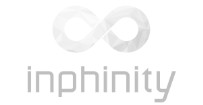National e-Invoicing System (KSeF). Accessible innovation or complicated modification? We explain how the digital platform will affect the way Polish entrepreneurs settle accounts [UPDATE OF 28.06.2024]

Konrad Wilk
Reading time: 12 min
![National e-Invoicing System (KSeF). Accessible innovation or complicated modification? We explain how the digital platform will affect the way Polish entrepreneurs settle accounts [UPDATE OF 28.06.2024]](https://www.bpxglobal.com/wp-content/uploads/2023/10/The-obligation-to-use-KSeF-will-concern-all-Polish-entrepreneurs-1088x556.png) Date: 25 October 2023
Date: 25 October 2023The obligation to generate and send structured invoices via special centralized electronic platform will become a daily routine for hundreds of thousands of entrepreneurs across Poland as soon as 1 February 2026.
From this article you will learn:
- What is KSeF and how it works.
- What aspects to pay attention to when issuing an e-invoice.
- How to improve the processes of sending documents under the new rules.
Update of 28.06.2024
President Andrzej Duda has signed a law pushing back the deadline for the implementation of the mandatory KSeF to February 1, 2026. The law was published in the Journal of Laws.
KSeF – what exactly does it mean?
The National e-Invoicing System is nothing but a new online platform obliging business owners to issue, send and receive invoices only electronically. The aforementioned system will provide not only the ability to send, store and view invoices via digital platform, but also constant verification of settlements by tax authorities. Effective implementation and comprehensive familiarization with the new invoice settlement rules, as well as the KSeF system itself, requires taxpayers to prepare carefully, both technically and process-wise. Who will be affected by the new billing system? When will it takes effect? How to streamline invoice sending activities and understand the new procedures? We will answer all important questions about the National e-Invoicing System in the article below.
As explained by the Ministry of Finance, the indicated practice is intended to facilitate settlements between companies, provide greater security in the flow of documents and improve activities related to the sealing of the tax system. All invoices will be issued and received by authorized people on private computers connected to the KSeF system. Sending invoices through that platform will further eliminate the need to transmit documents directly to the buyer. The recipient of an invoice (which, once entered, is given a unique number assigned by the system), wishing to check the document, will be able to verify and download it.
New rules – from when and for who?
KSeF and structured invoices operate since the beginning of 2022, however, sending documents digitally has not been mandatory until now.
The change in the method of invoicing will apply to all VAT payers, including sole proprietors.
The e-invoicing obligation will enter into force on 1 February 2026, and will apply to all active VAT payers. In turn, then electronic invoices will already be required to be issued by all entrepreneurs, including those exempt from VAT.
In addition, the new system will completely bypass consumer invoices (B2C), tickets functioning as invoices, and invoices generated in OSS and IOSS procedures (they will still be able to be issued in any format). After the introduction of e-invoicing obligation, it will still be possible to issue invoices from cash registers and receipts with NIP in the form of your choice but eventually (date to be determined), the indicated documents will already be able to be generated electronically only.
KSeF benefits.
The introduction of compulsory digital billing entails a number of benefits tasked with streamline overall documentation workflow processes. Payers will be able to count on a faster 40-day maximum VAT refund deadline (currently it is 60 days). In addition, both issuers and recipients will gain constant access to KSeF, and therefore all invoices, as long as they carry a device with Internet access. Electronic invoices will be securely stored, thereby minimizing the risk of losing documents (all data will be additionally multiplied and saved in backup copies). The format of that invoice will be standardized, which will reduce errors and shorten the time of information and invoice circulation, and therefore the controls associated with the aforementioned process. At the same time, companies will be relieved of the obligation to archive all invoices in paper form and will not be obliged to submit JPK_FA or JPK_VAT RR files at the request of the office.
The aspect of reading data from invoices is also worth noting. Currently, many entrepreneurs and accountants use the OCR system, which makes it possible to read data from an invoice image. However, the aforementioned system requires careful checking of, for example, dates, numbers or other values given on the document. KSeF – thanks to the introduction of a standardized invoice format – makes it possible for IT systems to read data from the document without the risk of errors.

The National e-Invoice System will be based only on electronic invoices, eliminating the need to archive documents, among other things.
The National e-Invoicing System and the company budget.
The total expenses resulting from the need to adapt company systems to KSeF are estimated by business entrepreneurs at up to tens of thousands of zlotys.
However, expenses related to the implementation of KSeF can be included in company costs (interpretation of June 8, 2022 No. 0111-KDIB2-1.4010.227. 2022.1.MKU).
In addition, the Director of the National Tax Information stated that according to Article 15 of the 1 CIT Act, deductible expenses may include all costs the bear of which is in connection with the taxpayer’s income or which serve to maintain or secure the source of income. The interpretation confirms that the indicated receivables are costs for income tax purposes, even though they are only indirectly related to income.
Structured invoices – how to issue documents in the new system?
Moving away from traditional paper invoices will certainly be a huge challenge for many Polish entrepreneurs. Sending invoices via KSeF will require integration of the invoicing tools used by companies with the indicated system, however, the procedure mentioned will streamline the often complicated and time-consuming accounting activities. To meet a number of demanding billing processes, we present an application that will enable the integration of the SAP system with the National e-Invoice System. This application will provide structured document generation (XML) and automate sending of sales invoices while receiving purchase invoices.
Thanks to the API programming interface, invoices will be generated in accordance with Ministry of Finance standards, sent to KSeF and – after the system assigns an individual identifier and time stamp – downloaded and pre-entered into the SAP system.
The above commitments will allow companies that use our services to save time, reduce errors, significantly increase efficiency and, in the long run – reduce costs.
In summary, by implementing e-KSF you will gain – automation of sending and receiving e-invoices compliant with all new standards of the Ministry of Finance, integration of your SAP system with the KSeF platform and adaptation of your company’s processes to the new requirements. Data consistency and security, reduction the risk of errors, continuous control of the application after implementation, and professional support to improve the work of accountants.
KSeF data security.
The Ministry of Finance ensures that within the National e-Invoicing System, both data, as well as all communications are encrypted. The Ministry also informs that authorization in the indicated system is secured at the highest possible level.
Authentication is based on systems of qualified certificates, trusted signatures and additional cryptography mechanisms based on symmetric and asymmetric keys. The Ministry of Finance also confirmed that KSeF has passed a security audit.
Invoices and settlements in numbers.
Italy is a country that has already implemented structured mandatory invoicing in 2019 and has begun to widely use the new system. About 12 months after the extension of mandatory electronic invoicing for all companies, 3.9 million businesses have issued a total of about 2 billion documents. It is worth noting that the share of large, medium and small companies is 80% of all invoices sent. The remaining 20% is accounted for by micro-enterprises and sole proprietorships.
Using Italy as an example, we can also see that the adoption of the aforementioned billing method has significantly accelerated the development of B2B e-commerce. The value of orders exchanged via digital tools, between Italian companies alone then reached 410 billion euros, which corresponds to 19% of the country’s total B2B transactions. In addition, more than 50% of large companies say they gained benefits in terms of monitoring outstanding receivables and managing taxes after the introduction of the new system. Medium and small-sized companies, on the other hand, point to the facilitate of cost accounting.
In addition to Poland, advanced preparations to implement the new system are underway in France. Romania and Germany are expected to follow, although the latter has pushed back mandatory e-invoicing until January 1, 2026. In the longer term, the obligation to settle invoices via a digital platform is expected to come into force in other EU member states as well.
Statistics in Poland clearly show that in early 2022, just after introduction of the new system, when using electronic invoices was voluntary, the digital platform was not very popular. In the first month of the system’s operation, only two documents were processed through the platform. The highest number of invoices generated in KSeF was in last November. In the indicated month, 5212 items were entered into the system. In total, for the first 12 months of KSeF activity, only 22,000 invoices were sent to the platform. Today, the numbers are steadily increasing, and the Ministry of Finance predicts that in the future up to 2.5 billion invoices a year will pass through the system. These are huge numbers that will certainly have to find a basis in integrated, efficient and smoothly operating systems.
Procedure for sending invoices – what will it look like?
First of all, it is important for the taxpayer to inform the relevant authority who will be the entity authorized to issue documents. Then the authorized entity must authenticate itself in the KSeF system and upload prepared e-invoice. Later verification is already left to the platform – the National e-Invoice System checks the payer and assigns a unique identification number to the document.
In addition, each invoice will have to be prepared according to a common template, based on the logical structure (schema) established by the Ministry of Finance.
The possibility of self-invoicing will still apply, but the seller authorizing the buyer to issue invoices on its behalf will has to give the said buyer the appropriate authorizations in the system.
KSeF does not put new requirements on the content of the invoice itself. Fields in the electronic document can be completed depending on the criteria indicated in the law for the specific case documented by the invoice. To facilitate, the Ministry of Finance has indicated 4 types of fields relating to the obligation to fill in particular lines. These will be: mandatory fields, logical fields, and two categories of optional fields. Failure to fill in the mandatory fields will result in the file not being recognized as an invoice, but any accounting or personal errors contained in the document will not be detected by the system. In this case, it will be necessary to issue a correcting invoice.

The National e-Invoice System will only accept invoices issued according to the template, set by the Ministry of Finance.
As a recipient, will I receive information that an e-invoice has been issued to me in system?
The invoice will be considered issued on the day the document is sent to KSeF. The date of receipt is the day on which the invoice was generated in the system. Therefore, we consider the moment when the invoice was issued in KSeF as the moment when the document was received at the buyer. The indicated practice guarantees confirmation that the invoice was delivered to the counterparty on a given date and eliminates the need to issue duplicates. However, it is assumed that acceptance of the invoice in system will not be required, and the platform itself will not inform recipients that the document has been issued.
What about the paper version, will it be required?
When the obligation to settle invoices through the National e-Invoice System takes effect, paper documents will be withdrawn.
In addition, the Ministry of Fi nance anticipates penalties for non-compliance with the rules of KSeF. It is assumed that the maximum penalty may be as much as 100% of the amount of payable VAT shown on the invoice. If no tax is shown on the document, the penalty will be up to more than 18% of the total amount due shown.
However, there are exceptions. While invoicing outside the platform is allowed in certain situations, the Ministry points to specific ways for payers to act under the circumstances. Consideration is given to technical interruptions related to the operation of the system, platform failures due to technical problems, or direct problems of payers, such as lack of Internet access. In the case of the above situations, if the purchaser agrees, the invoice issuer can send a paper document or in PDF form. However, the invoice should later be entered into KSeF, and the exact deadline for sending that document is regulated by the draft law.
The business environment changes rapidly and not infrequently surprises us with the introduction of new rules. That is why it is so important to constantly update your knowledge and implement solutions that allow you to quickly adapt to new conditions and simplify the implementation of complex and time-consuming processes.
Marcin Matysiak, SAP Consultant & Project Manager at BPX S.A.
The National e-Invoicing System seems to be an innovative solution that will modernize, structure, but also significantly reform the way of billing we have used until now. The new technological infrastructure will certainly impose additional obligations on payers and the need to implement new rules. In a broader perspective it should ensure greater security of data flow and streamline document settlement and payment processes.
Innovations in finance, controlling and payments are activities in which we specialize. If you are involved in finance and the subject of accounting is particularly close to your heart, be sure to also check out our proprietary BPX solution – Banking eXcellence, which enables the payment process to be carried out entirely in your company’s SAP system, without the need for an additional login to the bank: banking-excellence.
Detailed information, as well as a contact person who will be happy to answer additional questions and more broadly illustrate the strategy and how we are responding to the obligation to the use of KSeF are available
here.
We know how important it is for businesses to navigate efficiently in the sphere of finance and payments, so we will systematically share news and updates in this area with you on our blog.
Source:
https://www.podatki.gov.pl/ksef/
https://www.gov.pl/web/kas/krajowy-system-e-faktur
https://jpk.info.pl/faktury/e-faktura-ustrukturyzowana-ksef/
https://www.bpxglobal.com/wp-content/uploads/2023/03/e-KSF_onepager-2-80223.pdf
https://www.kis.gov.pl/wiadomosci/aktualnosci/-/asset_publisher/JSs9/content/krajowy-system-e-faktur-ksef-coraz-blizej-przygotuj-swoja-firme-do-e-fakturowania?redirect=https%3A%2F%2Fwww.kis.gov.pl%2Fstart%3Fp_p_id%3D101_INSTANCE_Xc7c%26p_p_lifecycle%3D0%26p_p_state%3Dnormal%26p_p_mode%3Dview%26p_p_col_id%3D_118_INSTANCE_8yWD__column-2%26p_p_col_count%3D1
https://edge9.hwupgrade.it/news/innovazione/le-aziende-italiane-hanno-emesso-piu-di-2-miliardi-di-fatture-elettroniche-ma-il-cammino-verso-la-digitalizzazione-e-ancora-lungo_90170.html
https://businessinsider.com.pl/prawo/podatki/ksef-czeka-juz-tylko-na-prezydenta-nie-obylo-sie-bez-kontrowersji/4w1b3s3
https://krajowysystemefaktur.pl/
https://firma.rp.pl/pit-cit-vat/art38710671-przygotowania-do-rewolucji-w-fakturach-vat-mozna-rozliczyc-w-kosztach
https://www.ey.com/pl_pl/tax/podatki-posrednie-vat-akcyza-clo/obowiazkowe-e-faktury-od-1-lipca-2024-roku-juz-pewne
https://www.rp.pl/podatki/art38913441-elektroniczne-faktury-beda-obowiazkowe-andrzej-duda-podpisal-ustawe-o-ksef
See recent writings
You drive us to strive for excellence in delivered projects and common challenges. Feel invited to read out blog that provides more in-depth knowledge on our implementations and experience. Read articles about digital business transformation, ERP and Business Intelligence systems. Discover interesting practical applications for future technologies.
- Blog
Navigating the challenges of introducing new software in a company – the role of technology and social dynamics
Contact us!
Let’s talk! Are you interested in our solutions? Our experts are happy to answer all of your questions.
 pl
pl

















